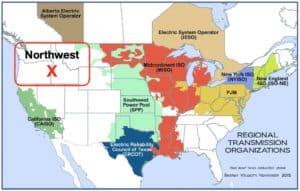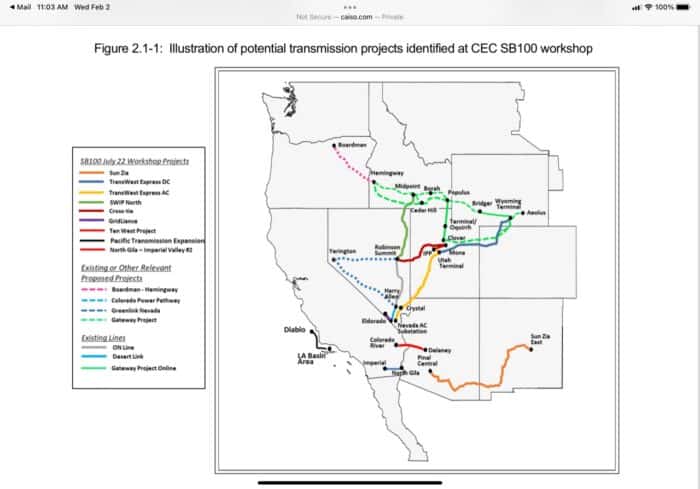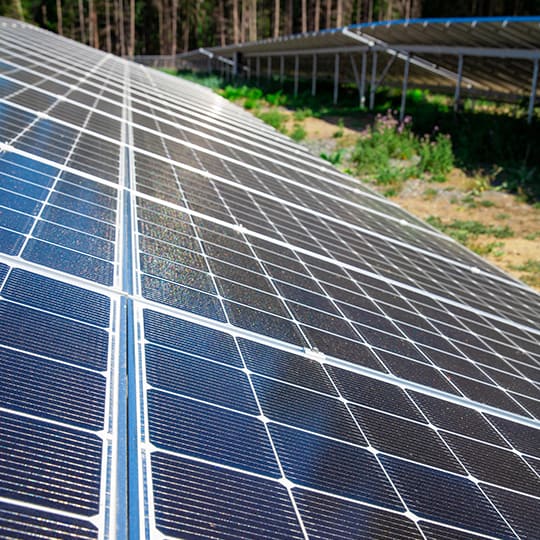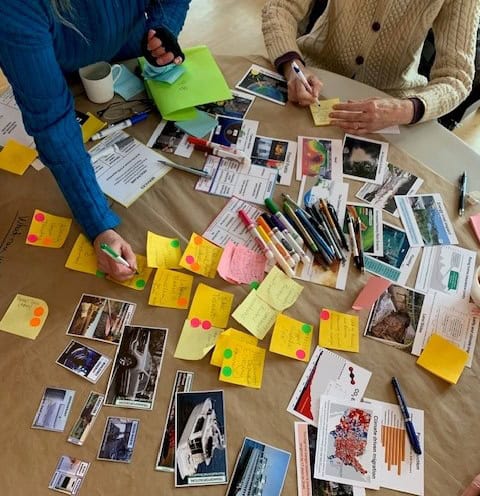Quick Fact: Northwest Resource Adequacy in a Rapidly Decarbonizing World
- Northwest regional load is projected to double by 2050 due to the electrification of transportation and heating, which account for most greenhouse gas (GHG) emissions in the region. This has the potential to reduce GHGs by 72%.

- This doubling of load will likely initially present significant problems, due to the combination of NIMByism (Sierra Club is opposing 317 wind power projects, while half the population want to streamline renewable energy projects, and the other half want to shut them down), and very long lead times to develop new generation resources (public support, financing, solar, wind, land, permits, transmission). An estimated 3 million to 14 million acres of land would be required to host required and solar and wind projects. Global investment of $131 trillion is estimated to get the job done by 2050.
- Until new capacity is brought online, we will likely not be able to keep up with demand, especially during extreme weather events, leading to Texas/California style rolling blackouts.
- To prepare for that, and to ensure reliable affordable electric service the region needs to front-load investment to rapidly prepare for potential rolling blackouts.
 Hydro is a key low carbon energy source to firm solar and wind and for baseload. No hydro sources should be reduced until adequate new clean generation sources are built and activated.
Hydro is a key low carbon energy source to firm solar and wind and for baseload. No hydro sources should be reduced until adequate new clean generation sources are built and activated.
- We strongly support the reduction of carbon intense energy such as coal and natural gas. BPA has been clear that there will be no more hydro. We are rapidly losing our ability to firm intermittent solar and wind power, which may lead to regional power outages, until firming capabilities are implemented.
- A key near-term strategic action should establish a Northwest Regional Transmission Organization (RTO). The Northwest is the only region of the US with no RTO. While most of the demand will be west of the Cascades, most of the generation will be east of the Cascades. The RTO should be mandated to solve the Pacific Northwest capacity problems first, as we weave together the various stakeholders across WA, OR, ID, MT and WY to ensure reliable supplies of power, adequate transmission infrastructure and competitive wholesale electricity prices. And it can accelerate the deployment of essential transmission capacity to interconnect the network of new solar and wind resources needed to meet the regions doubling power needs. We should get this going ASAP to tap into anticipated Federal infrastructure spending aimed at development of new clean energy resources.
- As Ben Kujala, director of power planning at Northwest Power and Conservation Council (NWPCC) observed, “I don’t think anyone is super prepared for a future where we’re electrifying everything, just because it’s so hard to [prepare]. You would have to invest so much money, and if you’re wrong, it would look so bad to go out and spend a bunch of money on something that just doesn’t materialize.“
Further Reading:
As we consider how to rapidly decarbonize the northwest region, we want to make sure we maintain reliable power under worst case conditions, to prevent harming safety of our population and impacting the economy that depends on energy to function. The following material covers a broad range of Northwest Resource Adequacy material and asks hard questions about the future of load, how fast land can be developed for new renewables, and much more. Each reference includes title, link, and pertinent quotes/summary extracts below each link.
-
- Sierra Club: The NIMBY Threat to Renewable Energy
“In Vermont, everyone loves clean energy—when it comes from someplace else”
Decarbonizing the northwest will require an estimated 3 million to 14 million acres of land to host required and solar and wind projects. All over the US, planners are discovering it will take much longer to acquire and permit land due to NIMBYism. - Wind Power Project Rejection Database
Numerous examples of wind power permit projects rejected by state and county governments. - Not In Our Backyard
An example of public policy entities fighting the proliferation of renewables by drafting legislation, testifying before legislative committees, placing op-eds in newspapers. - Pacific Northwest poised to test 100% renewables as utilities weigh gas vs. storage
- Imagine the unimaginable’: How the Pacific Northwest is trying to build a reliable grid in a changing climate
“I don’t think anyone is super prepared for a future where we’re electrifying everything, just because it’s so hard to [prepare]. You would have to invest so much money, and if you’re wrong, it would look so bad to go out and spend a bunch of money on something that just doesn’t materialize.” Ben Kujala, Director of Power Planning at the Northwest Power and Conservation Council - NWPCC: 2021 Northwest Power Plan
“As we look to the future, we anticipate that the transition to a new paradigm will be accompanied by risk and uncertainty.”“While the total nameplate capacity of the region’s power supply is significantly higher than the expected 2023 winter peak electrical demand of about 32,600 megawatts, the deliverable (effective) capacity of the system is much lower.”“To maintain adequacy, the region will need about 1,600 megawatts of effective capacity (or some combination of added capacity and additional balancing reserves) before 2023. The Council’s adequacy assessment does not go beyond 2025.” - PNUCC: Northwest Regional Forecast of Power Loads and Resources, 2021 through 2031
“The Northwest has a growing difference between supply and demand over the next decade due to coal plant retirements and forecasted load growth. The figure below shows how utilities’ peak loads and expected peaking capability of resources stack up for winter (January) and summer (August). The winter deficit grows from around 1,600 MW to 6,500 MW, and the summer deficit grows from 200 MW to 5,900 MW over the 10-year study horizon.““The Northwest Power and Conservation Council indicates the region is inadequate as of the last assessment. They conduct an annual Adequacy Assessment that estimates the odds of the region having an outage in a specific year. The Council’s benchmark for an adequate system is a 5% or lower annual loss- of-load probability (LOLP). Their 2019 analysis focused on years 2021, 2024, and 2026. Their projection for 2021 indicates that the system is inadequate, with a LOLP of 7.5%.5 The LOLP value grows to 12.8% in 2024, and reaches 26% in 2026. The growing LOLP is largely due to coal unit retirements in the Northwest. - Energy+Environmental Economics: Capacity Needs of the Pacific Northwest—2019 to 2030
Land is a sleeper issue in transforming the grid. From a national perspective, it has been estimated that we need to build three 1,000 mile long transmission lines every year for the next 30 years to interconnect distributed solar and wind generation with the grid. And in the past 10 years we haven’t built even one. It’s going to be a big expensive job.To maintain resource adequacy and prevent rolling blackouts similar to what we have seen in Texas and California, E3 , in their 25% load increase model, estimates 97 GW of new wind and 46 GW of new solar are needed, requiring an estimated 3 to 14 million acres of land – or 20 to 100 times the land area of Portland and Seattle combined. It is unclear whether there are enough sites that are suitable, purchasable and permittable for that level of renewable energy deployment. And that’s just for a 25% load increase by 2050, not the 90% Washington energy strategy estimate.“Near-term (today-2025): the Pacific Northwest faces a near-term capacity shortfall of 3-7 GW.”“Mid-term (2025-2030): capacity need grows to as much as 10 GW as additional firm capacity retires and this need is not fully replaced by planned additions. ““Long-term (2030-2050): the region needs to grow or maintain firm dispatchable capacity to address the energy sufficiency challenges created by a deeply decarbonized grid.”“All planned capacity additions, and significantly more, are required by 2030.”“Even in an optimistic scenario (if all planned capacity additions detailed in the reviewed utility IRPs are approved and constructed), the region remains approximately 3 GW short by 2030.”
- NWPP Northwest Power Pool: Resource Adequacy Program – Detailed Design
“The integrated regional power system is in transition. The impending retirement of several thermal generators within and outside the region (the Western US and Canada) mixed with increasing variable energy resources (VERs), has led to questions about whether the region will continue to have an adequate supply of electricity during critical hours. In the past four years, several studies have identified an urgent and immediate challenge to the regional electricity system’s ability to provide reliable electric service during high demand conditions.”“These developments threaten to upset the balance of loads and resources within the region and, if not properly addressed, will increase the risk of supply disruptions during Winter and Summer, increase financial risk for utility customers, and hinder the ability of the system to meet environmental goals and legal requirements.” - BPA: 2019 Pacific Northwest Loads and Resources Study
“Annual Energy Surplus/Deficits: Under critical water conditions; the Federal system is projected to have annual energy deficits across the study period, ranging from as low as – 194 aMW, to as large as -354 aMW. These annual energy deficits projections are similar to those projected in the 2018 White Book, however the first two years are forecast to have slightly greater deficits and rest of the study period has slightly smaller deficits.”“January 120-Hour Capacity Surplus/Deficits: Under critical water conditions; the Federal system is projected to have January 120-Hour capacity deficits over the study period, ranging from as low as -950 MW to as high as -1,226 MW.” - WA Department of Commerce: State Electric Utility Resource Planning 2020 Report Pursuant to RCW 19.280.060
“The Pacific Northwest Utilities Conference Committee 2020 Regional Forecast report reveals a projected electricity deficit for the Northwest starting in 2024 (283 aMW) and continuing to grow through the end of the 10-year planning period (3,200 aMW). PNUCC identifies a large amount of planned resources in the region, but because they have less certainty from a financial or regulatory standpoint, they therefore are not included in the forecast.“The region’s premier planning body, the Northwest Power and Conservation Council, evaluated the adequacy of the Northwest electric power supply in 2020 and concluded that resources are not expected to meet its adequacy standard after 2020. Resources are considered adequate when the loss-of-load probability (LOLP) is less than 5 percent. However, with the planned retirements of Boardman and Centralia 1 at the end of 2020, the LOLP will reach of 7.5 percent in 2021 and will no longer meet the Power Council’s adequacy standard. The retirement of the Hardin coal-fired power plant and the Klamath Hydro facility in 2021 were forecast to raise the LOLP to 8.2 percent by 2024. The Council noted that other power plant retirements announced for later in the decade would raise the LOLP value further if replacement resources are not brought on line in a timely manner.” - WA Department of Commerce: 2021 Energy Strategy Transitioning to an Equitable Clean Energy Future
“In the Electrification Scenario, total energy demand drops 28%. Electricity demand grows 90% over 2020 levels by 2050, displacing fossil fuels in buildings and transportation through assumptions that drive replacement of existing equipment with electrified appliances and vehicles at the end of their useful lives.” - Pacificorp: 2021 Integrated Resource Plan
“To unlock the full promise of these abundant resources, we must add transmission and storage capacity, unlock customer demand response resources with a modernized grid, and replace retiring thermal resources with non-emitting resources like advanced nuclear, to connect the West to its energy future—built on a resilient, hardened, adaptable grid that safely delivers power when and where it’s needed.” - CAISO: 20-Year Transmission Outlook (draft)Read how aggressively California is planning to spend ($11.65B – see map below) on new transmission outside of the state. Washington’s budget and planning is lagging behind at best and conversations about a RTO dedicated to the Pacific Northwest are just beginning. PNW should be concerned with the potential for California to impact the regional power supply.“The interconnection solution along with the mitigation measures studied in the assessment will potentially create two strong connection points in California that enable more interconnections between California and the Pacific Northwest.”
- Sierra Club: The NIMBY Threat to Renewable Energy




